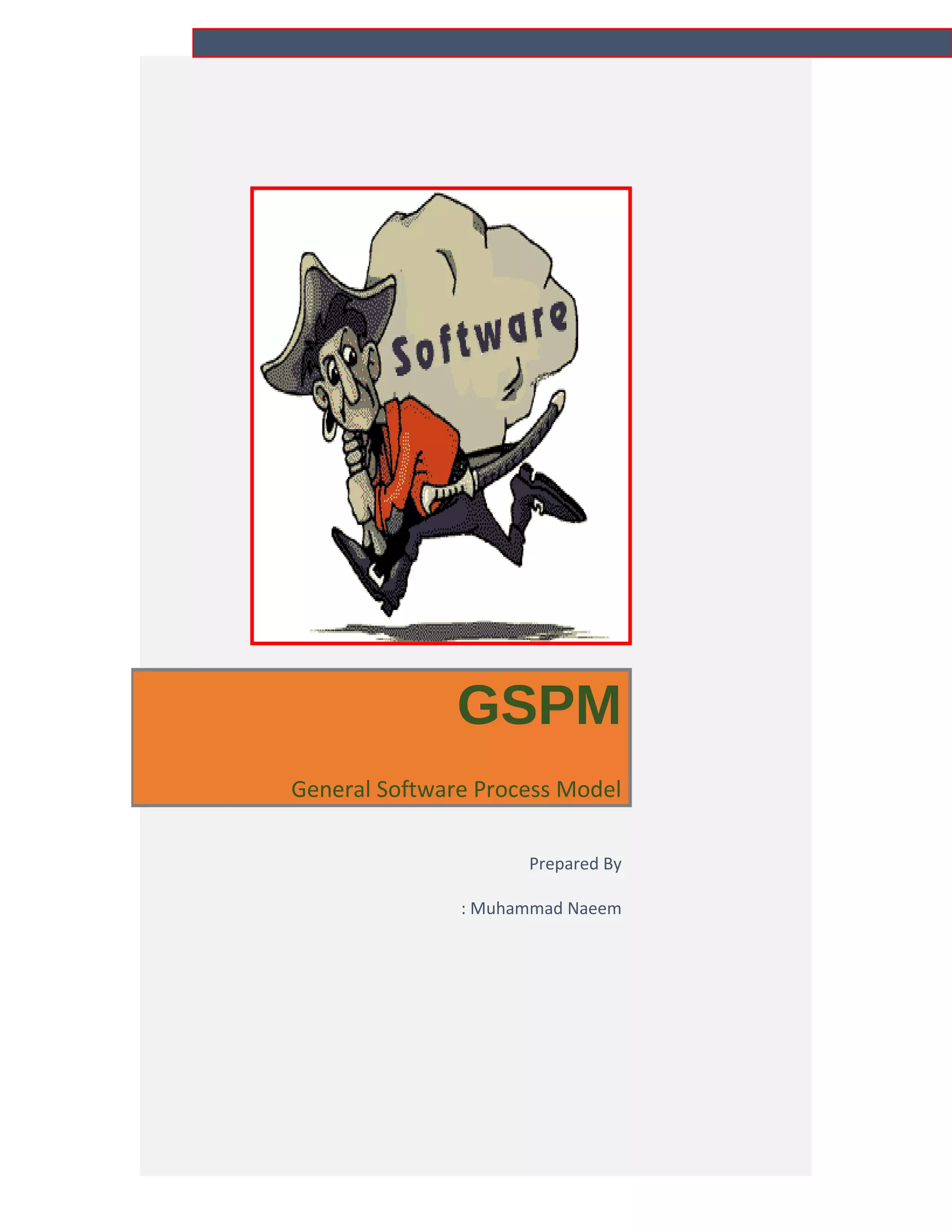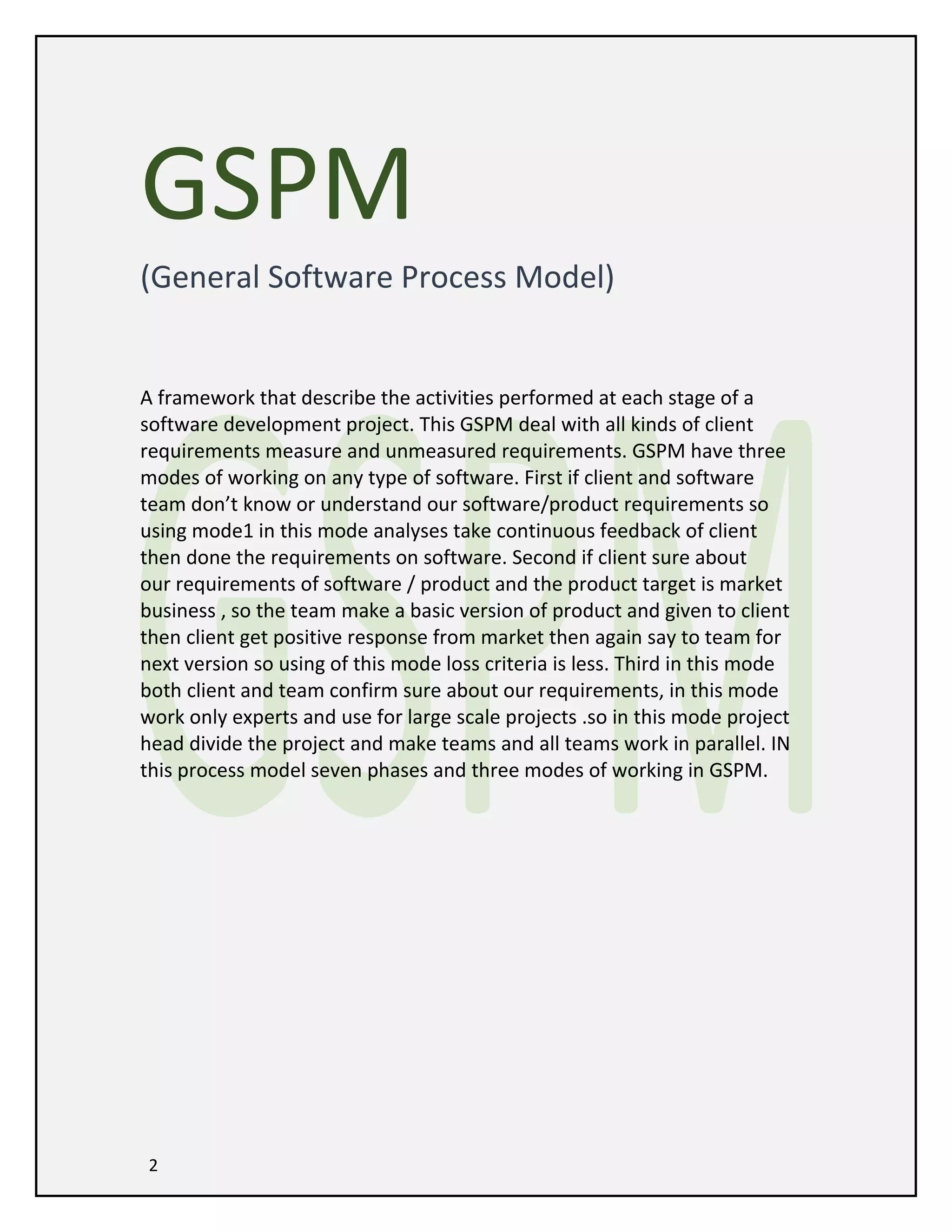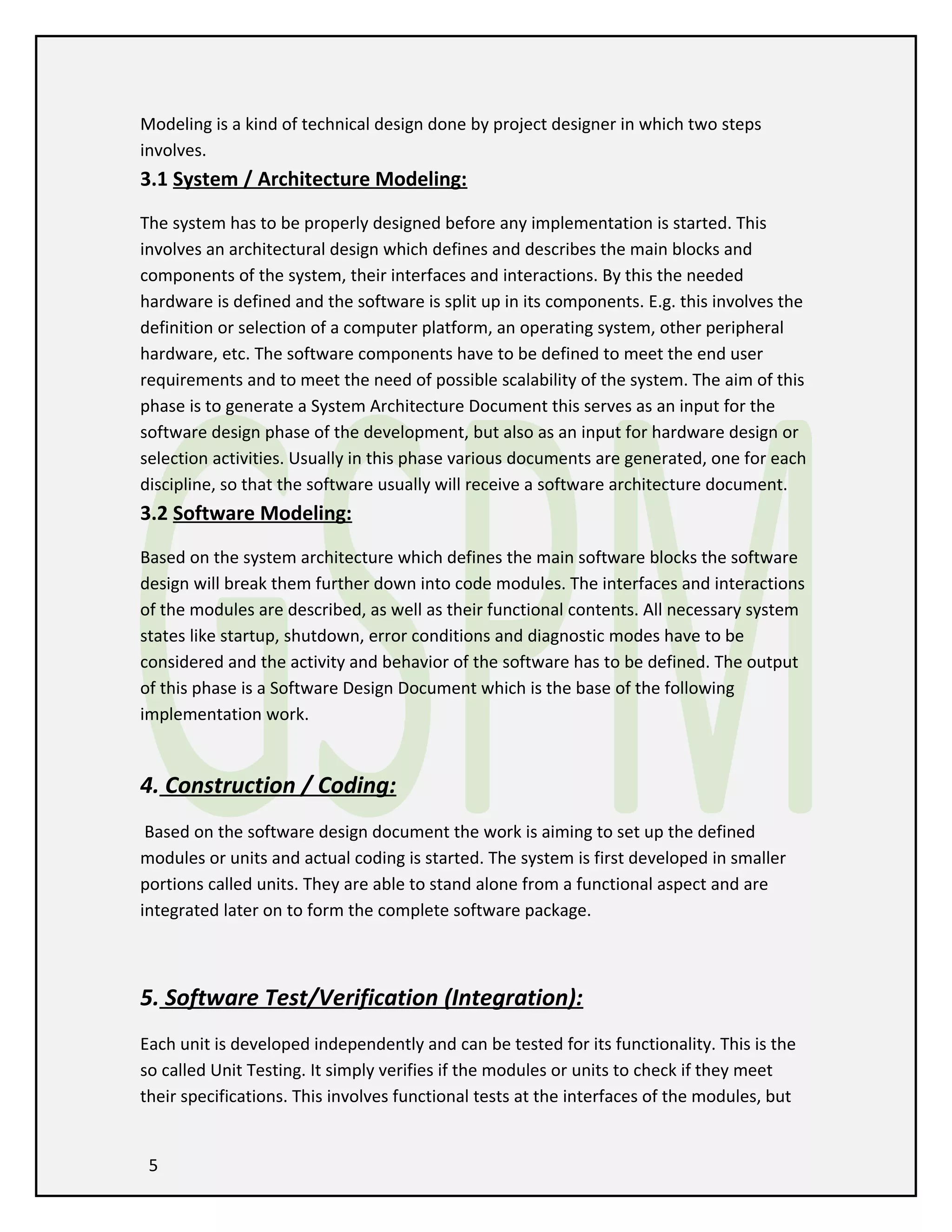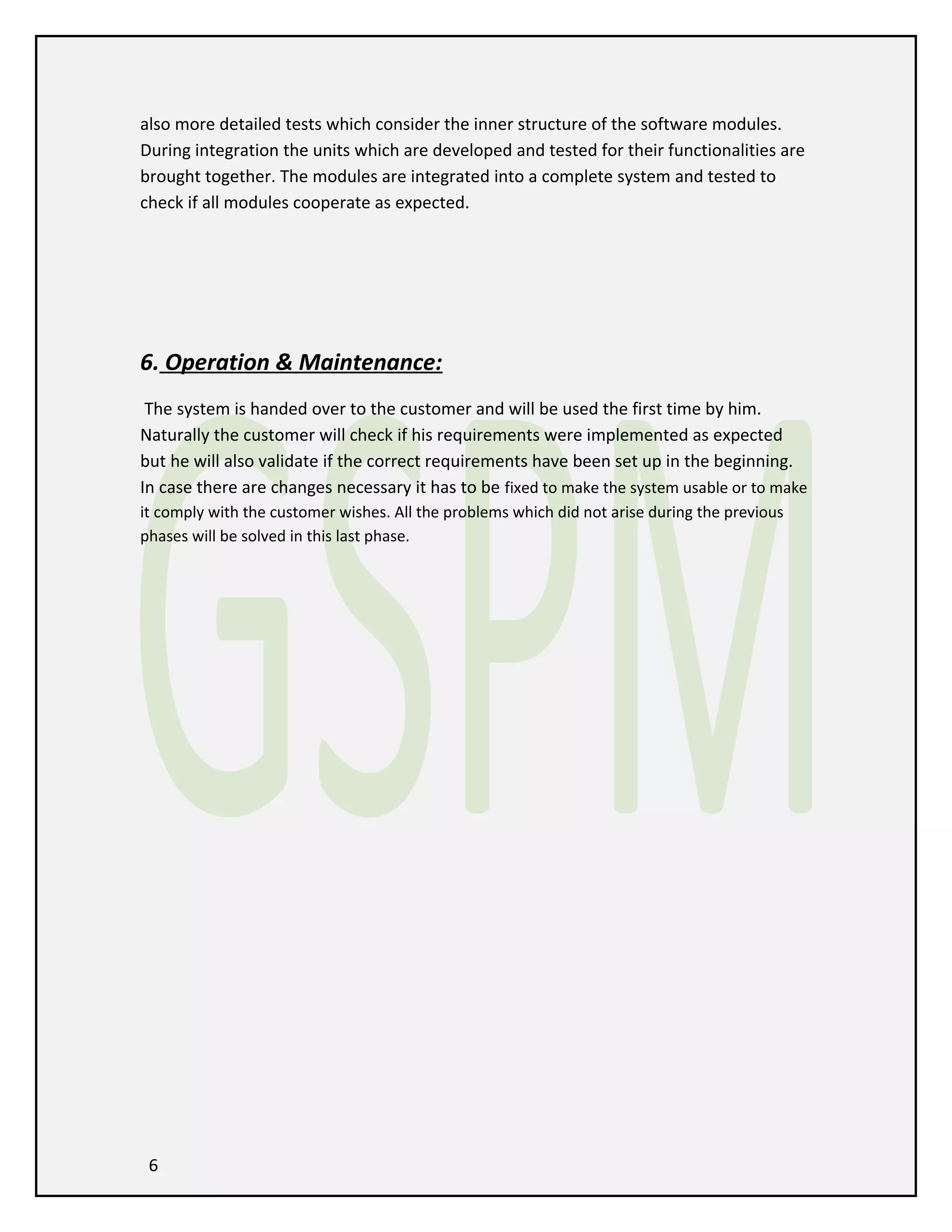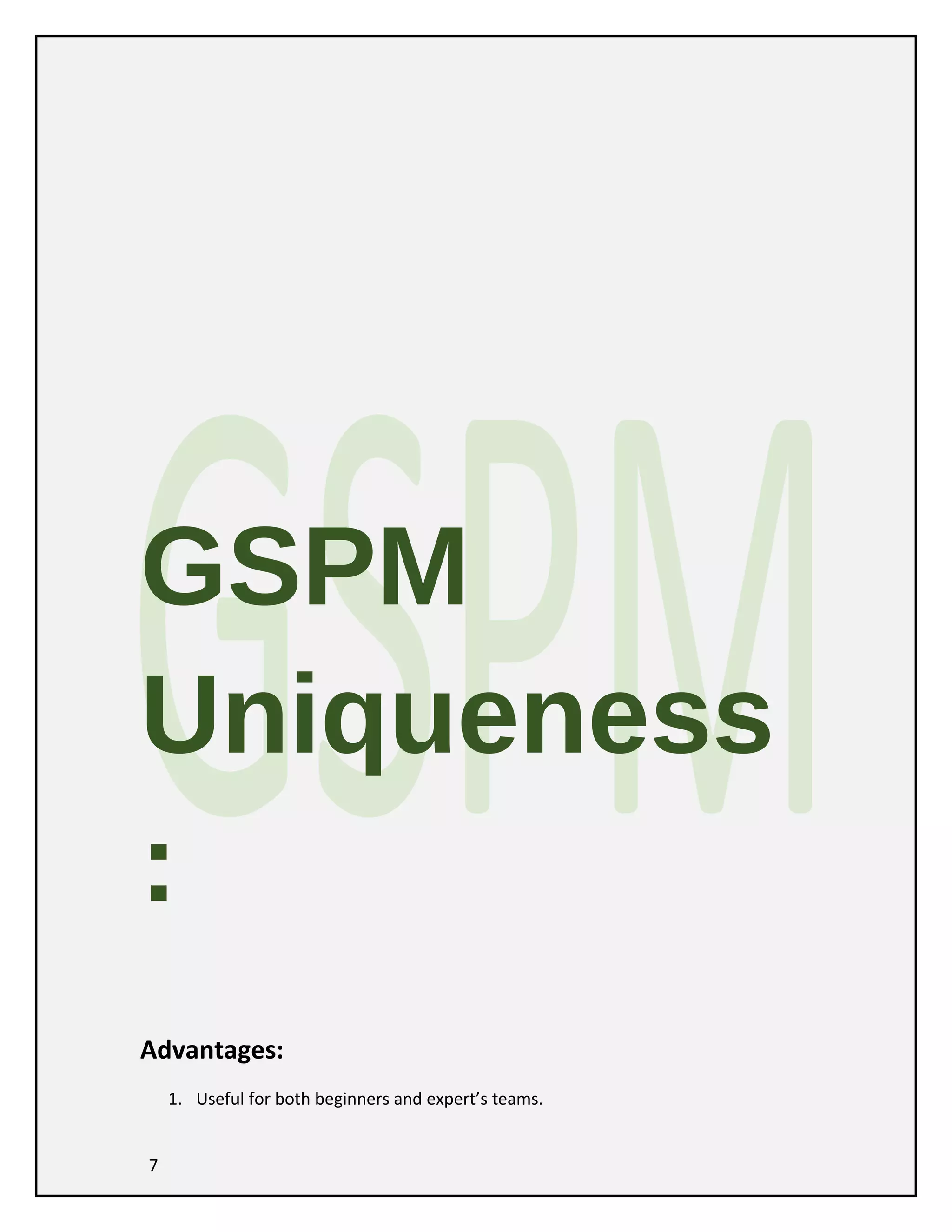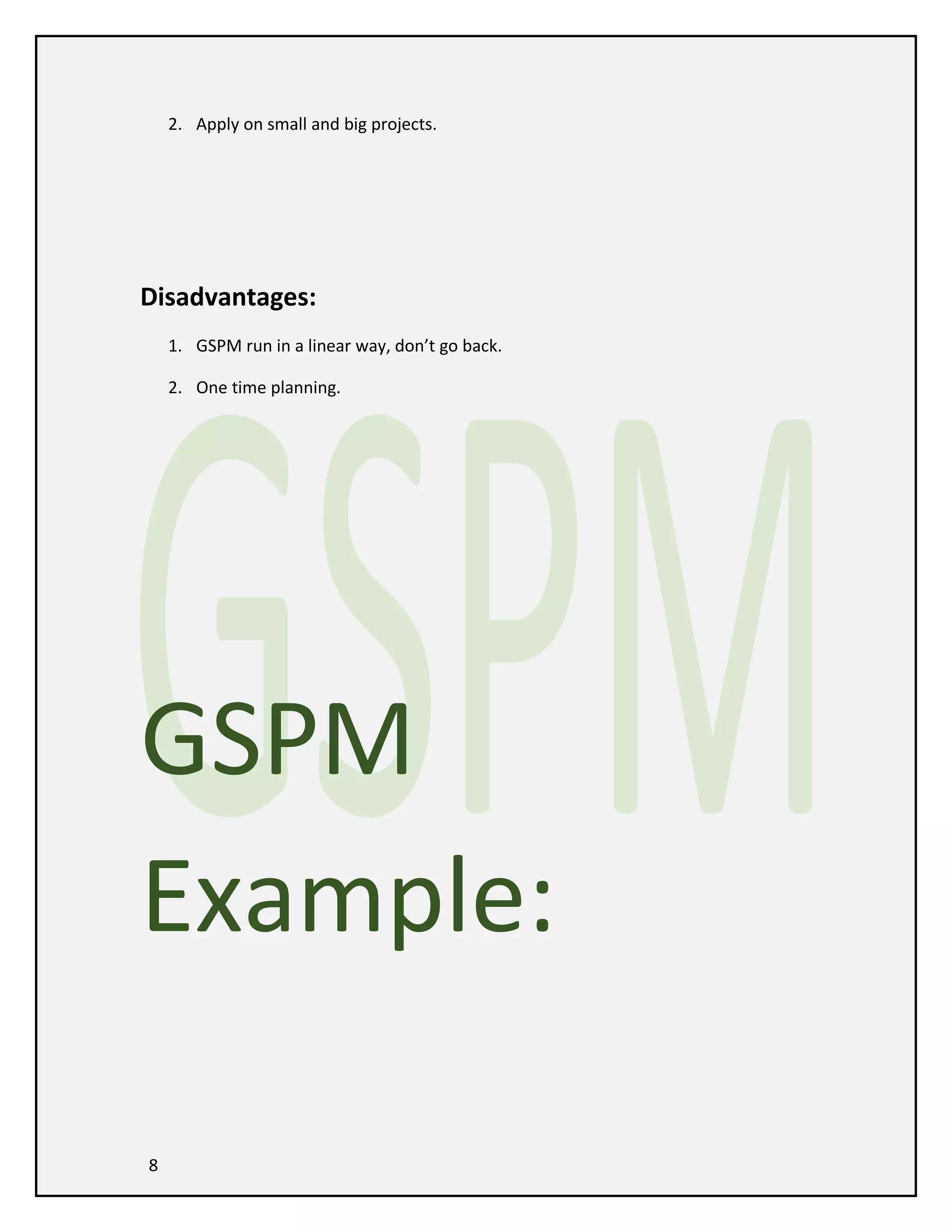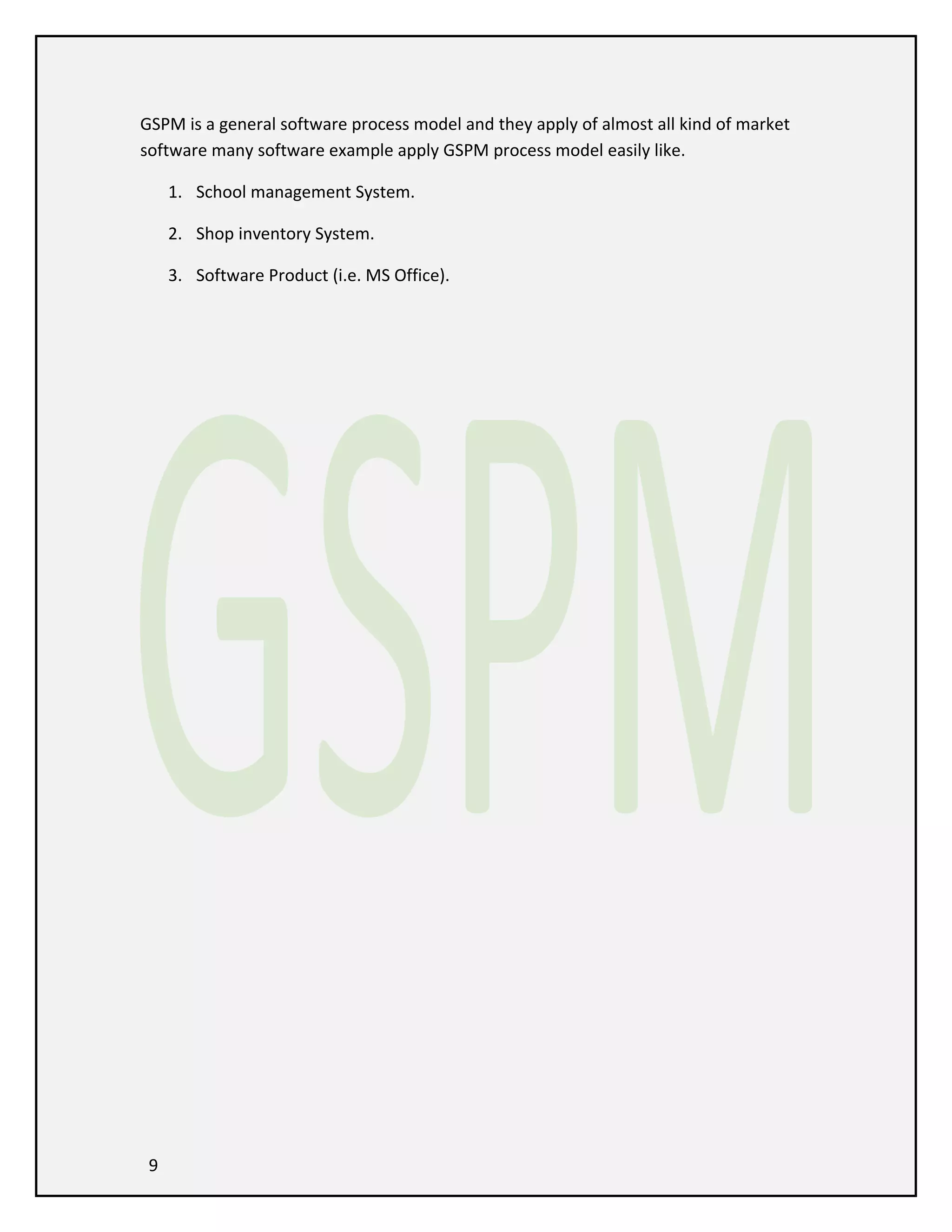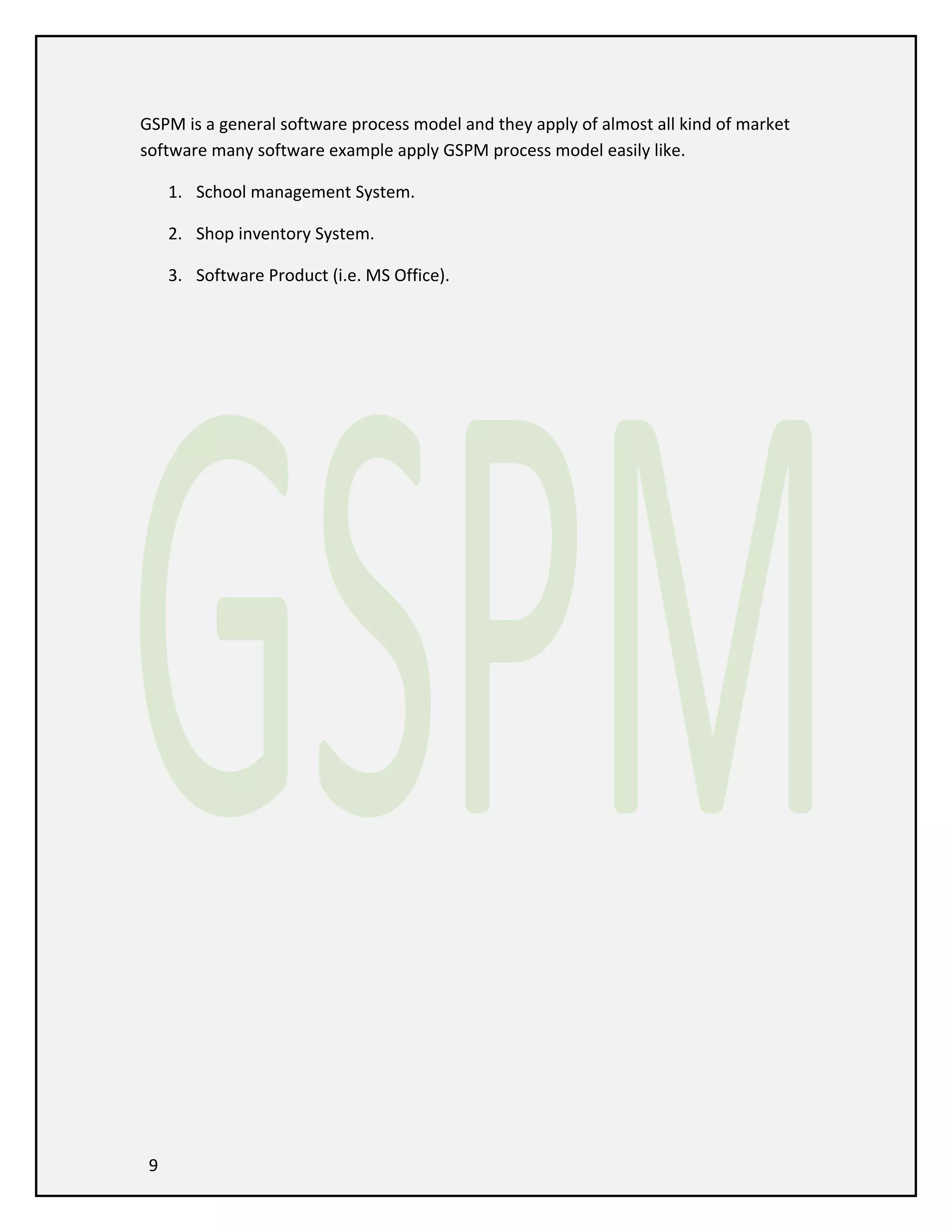The GSPM (General Software Process Model) is a framework that describes the activities performed at each stage of a software development project. It has three modes of working depending on requirements clarity. Mode 1 is used when requirements are unclear, Mode 2 when requirements are known but the product is new to the market, and Mode 3 when requirements are clear and the project is large-scale. The GSPM has seven phases: communication/requirements analysis, planning, modeling, construction/coding, testing/verification, operation & maintenance. It is useful for both beginners and experts on small and large projects but runs linearly without going back and has only one-time planning.
